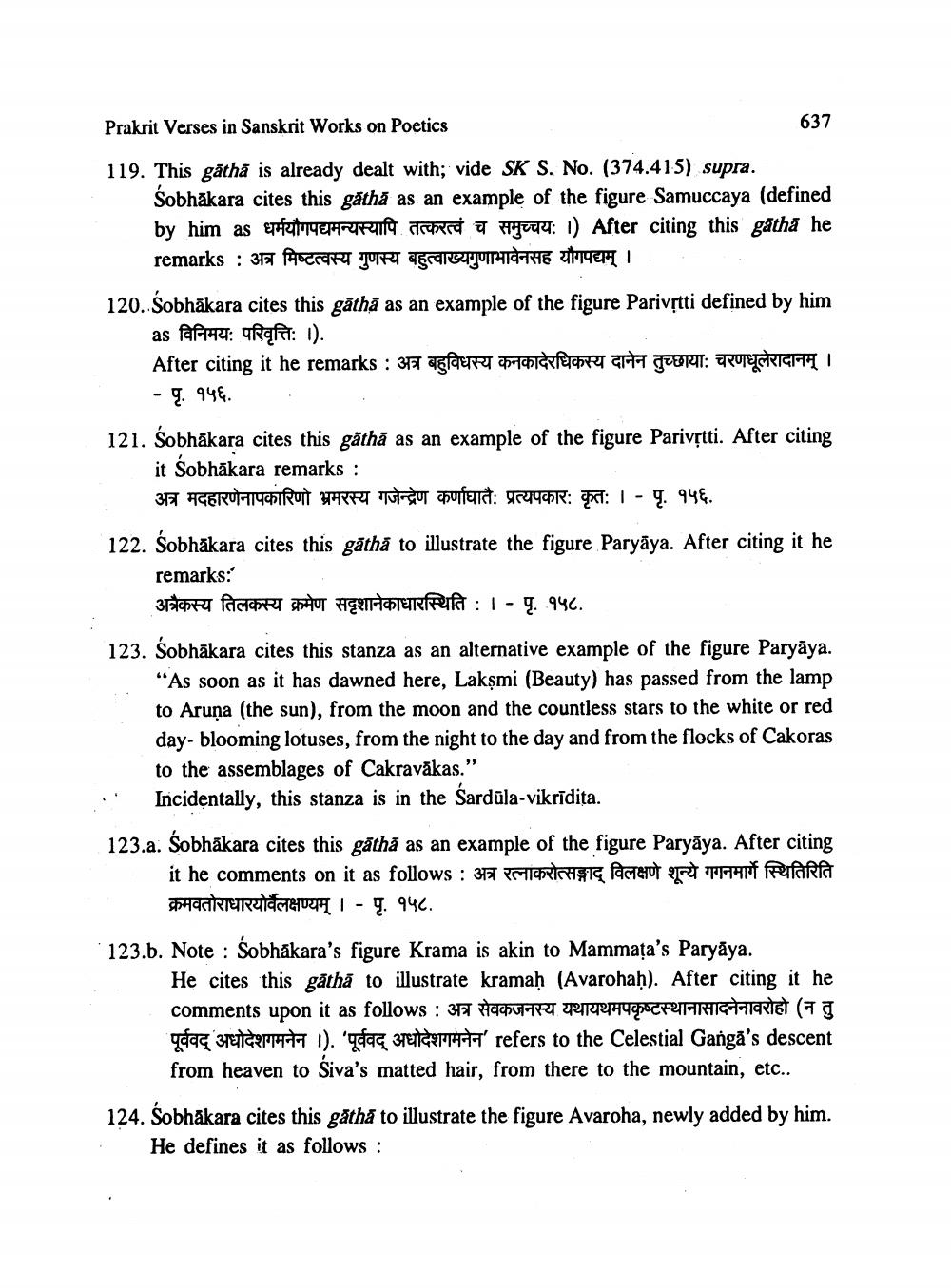________________
Prakrit Verses in Sanskrit Works on Poetics
637
119. This gātha is already dealt with; vide SK S. No. (374.415) supra.
Sobhākara cites this gåthā as an example of the figure Samuccaya (defined by him as धर्मयोगपद्यमन्यस्यापि तत्करत्वं च समुच्चय: ।) After citing this gatha he
remarks : अत्र मिष्टत्वस्य गुणस्य बहुत्वाख्यगुणाभावेनसह यौगपद्यम् । . 120. Sobhākara cites this gāthā as an example of the figure Parivịtti defined by him
as विनिमयः परिवृत्ति: ।). After citing it he remarks : अत्र बहुविधस्य कनकादेरधिकस्य दानेन तुच्छाया: चरणधूलेरादानम् । - पृ. १५६.
121. Sobhakara cites this gatha as an example of the figure Parivrtti. After citing
it Sobhakara remarks :
अत्र मदहारणेनापकारिणो भ्रमरस्य गजेन्द्रेण कर्णाघातै: प्रत्यपकारः कृत: । - पृ. १५६. 122. Sobhakara cites this gatha to illustrate the figure Paryaya. After citing it he
remarks:
अत्रैकस्य तिलकस्य क्रमेण सदृशानेकाधारस्थिति : । - पृ. १५८. 123. Sobhākara cites this stanza as an alternative example of the figure Paryāya.
“As soon as it has dawned here, Lakşmi (Beauty) has passed from the lamp to Aruņa (the sun), from the moon and the countless stars to the white or red day-blooming lotuses, from the night to the day and from the flocks of Cakoras to the assemblages of Cakravākas." Incidentally, this stanza is in the Sardūla-vikrīdita.
123.a. Sobhakara cites this gatha as an example of the figure Paryaya. After citing
it he comments on it as follows : अत्र रत्नाकरोत्सङ्गाद् विलक्षणे शून्ये गगनमार्गे स्थितिरिति क्रमवतोराधारयोर्वैलक्षण्यम् । - पृ. १५८.
123.b. Note : Sobhakara's figure Krama is akin to Mammata's Paryaya.
He cites this gātha to illustrate kramah (Avarohah). After citing it he comments upon it as follows : अत्र सेवकजनस्य यथायथमपकृष्टस्थानासादनेनावरोहो (न तु पूर्ववद अधोदेशगमनेन ।). 'पूर्ववद् अधोदेशगमनेन' refers to the Celestial Ganga's descent from heaven to Siva's matted hair, from there to the mountain, etc..
124. Sobhakara cites this gatha to illustrate the figure Avaroha, newly added by him.
He defines it as follows :




